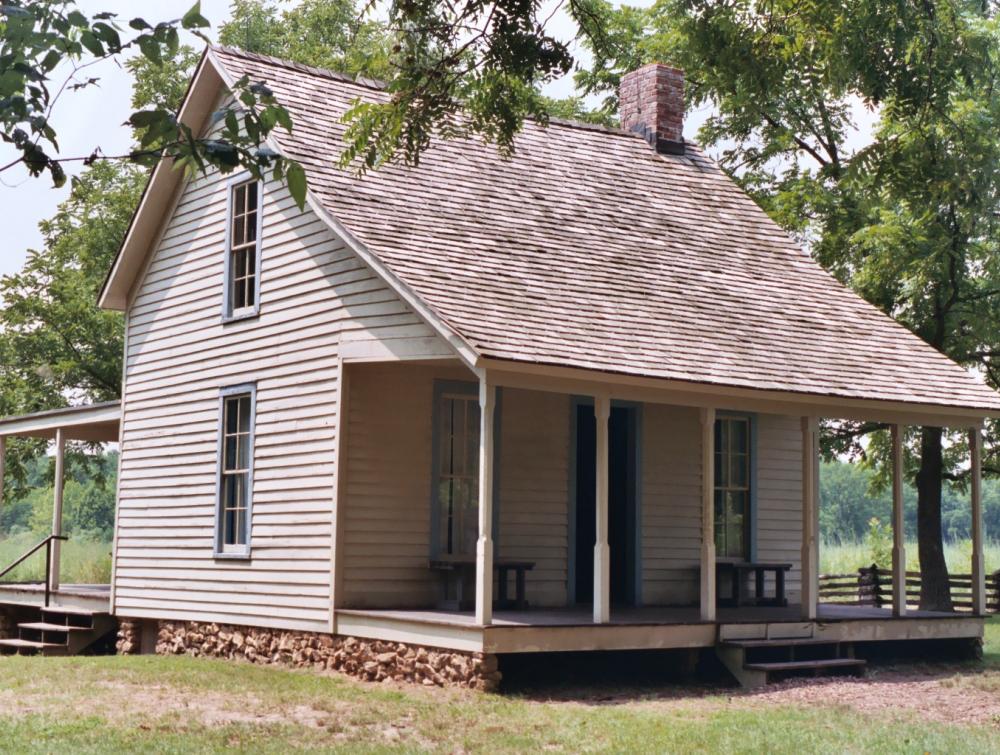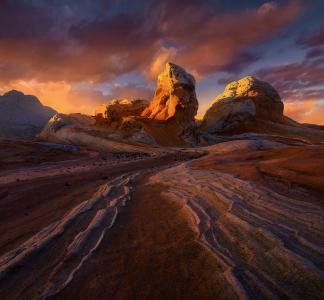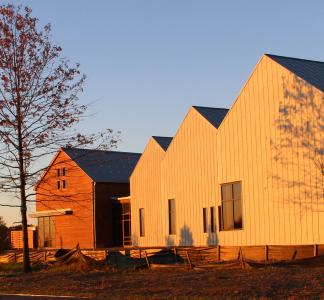How George Washington Carver National Monument became the first to honor an African American

George Washington Carver National Monument, Moses Carver House.
JeromeG111, flickr.
Anniversary of George Washington Carver National Monument
July 14 marks the anniversary of the founding of George Washington Carver National Monument--the first monument dedicated to an African American and the first to a non-president.
In 1943, Congress dedicated George Washington Carver’s boyhood home near Diamond, Missouri as a national monument to celebrate his influence on agriculture in the early 19th century, seen today in the now–common practice of rotating crops to allow nutrients in the soil to recover. This innovation stemmed from a conservation ethic that was ahead of its time.
National monuments are dedicated not only to protect national landscape treasures, but also to recognize places that signify great cultural and historical accomplishments. Known for his contributions to agriculture in the early 19th century, today George Washington Carver is immortalized in a monument that also commemorates the history and struggle of underrepresented groups.
From slavery to prominence
Soon after Carver was born in 1864, slavery was abolished, and the young boy was raised by his former white masters, Susan and Moses Carver, on a small homestead in Missouri. Carver’s fascination with nature and curious mind helped him gain an education against the odds. He so impressed his teachers, that he was able to earn a master’s degree in agriculture from Iowa State in 1896, at a time when most African Americans were not allowed to attend school.
Immediately after graduation, Carver became the protégé of education and civil rights leader Booker T. Washington, and was hired in the agricultural department at the famed Tuskegee Institute. There, he would go on to become a prominent scientist and leader until his death 47 years later.
During his time at Tuskegee Institute, Carver worked to encourage practical, sustainable farming methods. By rotating crops and educating local farmers, Carver encouraged sustainable practices while making lives better for poor farmers in the rural South.
First monument dedicated to an African American
As the first monument dedicated to an African American, the George Washington Carver National Monument celebrated diversity at a time when racial tensions were high and the Civil Rights movement was just taking shape.
The dedication of this monument over 70 years ago paved the way for other monuments celebrating the African American community, most recently the Pullman National Monument in 2015, which commemorates several key moments in African American and labor history.
In recent years, other underrepresented groups have finally been getting long-deserved recognition through national monument designation. In 2016, using the Antiquities Act, President Obama established the Belmont-Paul Women’s Equality National Monument to commemorate the role of women in shaping equal rights in the U.S., and the Stonewall National Monument, the first monument dedicated to LGBT rights and history.
Antiquities Act allows presidents to protect monuments
Carver’s monument was created by an act of Congress, but most modern monuments—including the aforementioned recent monuments recognizing breakthroughs in LGBT and women’s rights-are established through use of the Antiquities Act, a critical conservation tool that allows presidents to protect landmarks, from natural treasures to remarkable historical places. The law is most often associated with the preservation of natural icons like the Grand Canyon, but the George Washington Carver National Monument is an important reminder of its value as a tool for preserving cultural or historic places (especially those related to underrepresented communities).
Unfortunately, despite the importance of the Antiquities Act and its broad popularity, some anti-conservation lawmakers are determined to undermine it and make it harder for presidents to designate new monuments.


